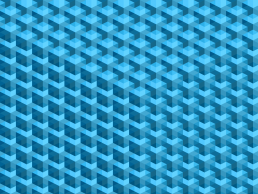“The future is always beginning now.” From what we saw at Flash Memory Summit, this quote from American poet Mark Strand holds true. Now that we’ve had a chance to unpack our bags and settle back in, here’s a wrap-up of insights we’d like to share from Flash Memory Summit 2016.
3D NAND stole the spotlight
The hot topic of Flash Memory Summit 2016 was, without a doubt, 3D NAND. For decades, flash memory chips were structured so that memory cells were spread horizontally over the chip’s plane. However, this 2D NAND technology is no longer able to keep pace with the increasing demands on memory capacity, while maintaining compact chip size.
With 3D NAND technology, memory cells are stacked vertically in multiple layers on the chip’s plane. Essentially, 3D NAND is the “high-rise” of memory technology, bringing higher capacity to smaller surface areas. The summit’s most interesting development in 3D NAND was Micron’s introduction of its first 3D NAND-based UFS and eMMC products for the mobile market.
QLC technology is evolving
From single-level cell (SLC) flash to multi-level cell (MLC) to triple-level cell (TLC) technology, we’re now in the age of quad-level cell (QLC) flash memory. QLC flash memory holds four bits of data in any one memory cell, as compared to one bit per cell in SLC.
One of the key features of QLC flash technology is it can hold a tremendous amount of data, while bringing costs down significantly. QLC technology is also more power-efficient than using many flash arrays combined. However, concerns remain about QLC flash drives, such as endurance and performance. Still, QLC is a great fit for particular use cases in which very large capacity flash drives are needed, but don’t require frequent data writing.
Toshiba made waves in this area with a 100 TB QLC-based solid-state drive (SSD). The company reported that the product may be on sale in the very near future.
Applications pushing memory to the limits
In addition to these hot technology trends, the primary applications of interest in the industry today are flash arrays, data centers, and enterprise storage. That said, there was plenty of discussion about applications such as automotive, augmented/virtual reality, wearables, and filming.
Automotive a big driver behind flash requirements
eMMC (embedded multimedia card) is being more broadly adopted in automotive, not only in in-vehicle infotainment (IVI), but also in other areas such as advanced driver assistance systems (ADAS), drive recorders, black boxes, and telematics boxes. In order to meet requirements from automotive applications, flash memory vendors are concentrating their efforts on improving flash memory reliability and endurance. Challenges include flash memory program-erase (P/E) cycles and data retention periods.
Final thoughts
From the talk around the 2016 summit, one thing’s crystal clear. 3D NAND is the future of flash technology. It will be everywhere – from mobiles and wearables, to cars, to server and data centers, and more. The prohibiting factor at the moment is cost. And although QLC delivers high-capacity storage at lower costs, challenges related to endurance and performance remain.
What’s the best way to handle data stored on flash memory?


